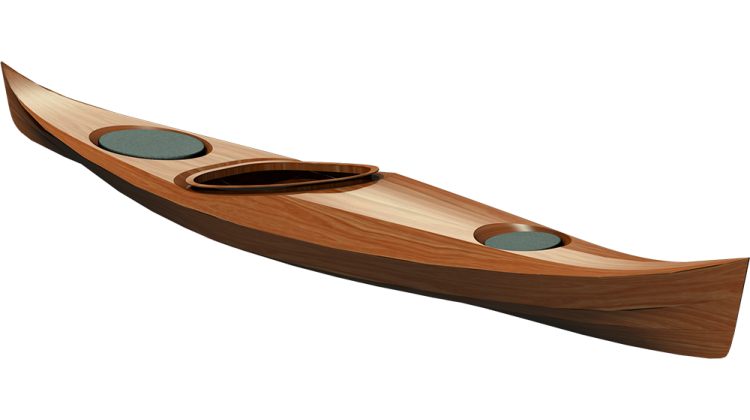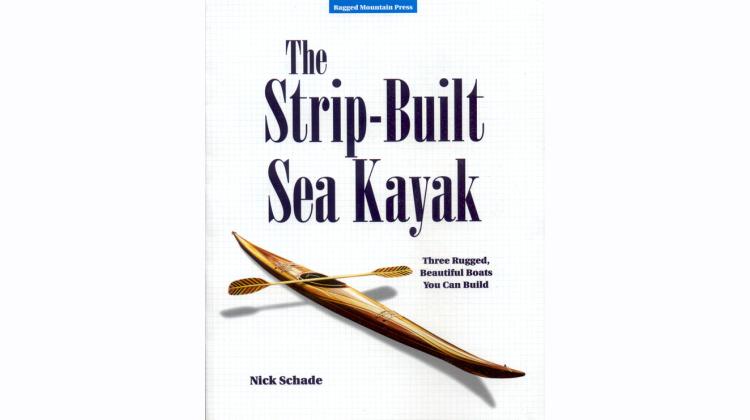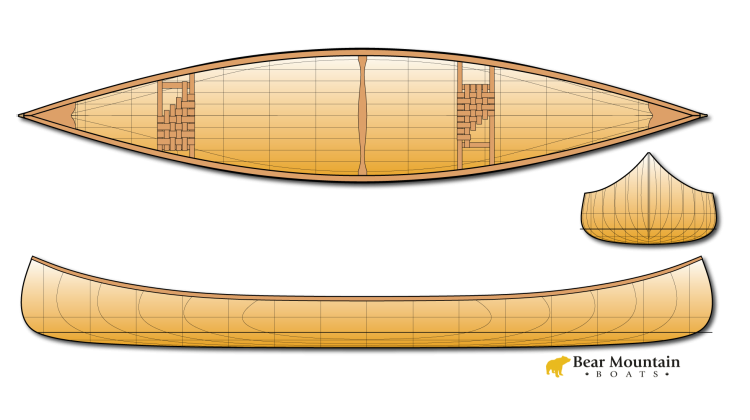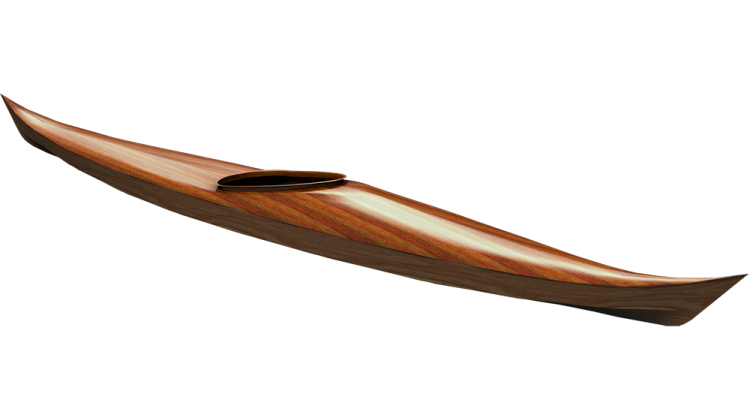In this episode of Guillemot Kayaks My Kayaks Workshop, Nick Schade continues working on the Petrel sea kayak, focusing on installing the cockpit recess and beginning the sanding process. He mentions his decision to use a 3/16 Cove and Bead bit, experimenting with its effectiveness in creating tight joints. He carefully fits the recess onto the deck, addressing any gaps to ensure a proper fit. During the sanding process, he points out the intricacies of ensuring a smooth and consistent surface, explaining his methods for addressing any imperfections. Throughout the episode, Nick showcases his attention to detail and dedication to achieving high-quality results in the construction of the kayak.
This is the Strip Built Petrel design.
Support my Patreon at: https://www.patreon.com/NickSchade
Tools:
- Palm Planes: https://www.leevalley.com/en-ca/shop/tools/hand-tools/planes/67716-veri…
- T-50 Stapler: https://amzn.to/2U7XjA0
- Bostitch Heavy Duty Staple Remover: https://amzn.to/2Gy8F8L
- 9/16" T-50 Staples: https://amzn.to/2RDOyfw
- Makita Hand-Held Belt Sander: https://amzn.to/2UrTpCk
- Festool RO Finish Sander: https://amzn.to/2tAS9BY
- Festool RO Agressive Sander: https://amzn.to/3bjAAYf
- Festool Contour Pad: https://amzn.to/2GYw43a
- Mirka Bendable Long Board: https://amzn.to/378MYGR
- Mirka Abranet Sanding Mesh: https://amzn.to/2Oy4VbA
Other Tools:
- Green high-stick Tape: https://amzn.to/317aLFV
- Titebond Glue: https://amzn.to/3aOhSaP 4-oz
- Boston Round Squeeze Glue Bottles: https://amzn.to/2RAYK8B
Hey, welcome to the Guillemot Kayaks Workshop. I'm Nick Schade, and we were working on the Petrel sea kayak. In the last episode, we finished up the stripping and in this episode, we will install the cockpit recess and start sanding.
Before I get into that, I'd like to talk a little bit about the Cove and Bead strips. As you remember, I'm using 3/16 thick strips and I'm using the 3/16ths diameter Cove and Bead bit. The typical Cove and Bead width for 3/16 strips is still using the quarter inch that you'd use for quarter inch thick strips. But I found a set of router bits that will make 3/16 Cove and Bead and I decided to experiment with that and see how it worked. Worked well, they work better than the quarter-inch Cove and Bead set. I got good tight joints, things seemed to nestle in there, they seemed to stay in place quite well. However, I can get better, tighter joint still by hand beveling, for example, using my Robo-bevel on square edged strips. I think I can still get tighter joints by hand beveling, so with that said let's get straight to this episode.
With the spacers out, these forms are free to move, so I can push them out of the way as I need to. So at this point, I'm going to drop the recess back in place and I've made some marks where the center line is on each end here. I'm going to line that up with the center line on the boat. Now I'm going to trace this onto the deck, the pattern I used to cut out this hole just as a rough size. It ends up cutting a little bit small, which is ideal, it'd be bad if it was oversized, it's hard to add wood back on, but here we can get it fitted in closer to where it needs to be, gives you a good idea where it needs to be. Then now we can make a new mark here.
They use a saber saw again to get in closer to that line. I use a bunch of little planes to clean up the edge. These need to get faired out and beveled so they fit up against the recess piece. So we'll just take and plane this down, just look for the high spots and knock them down.
I have a little gap here between where strip coming in from the stern and strip coming into the bow didn't quite meet and ended up being a little bit on the deck. I think by the time I get this all planed down, all that's going to remain of this little gap filler is the slightest little bit, so that's going to be invisible, but I just want to have something in there for now while I'm filling that in, getting it planed smooth up at the front end of this recess piece. This piece is a little bit wider than the feature line here, so I'm going to eventually want to trim this down, blend that in, but for now, I'm just going to work on getting these fits tighter. But you'll see me shave that back a little bit so this point ends up great even with that your feature line. So again this is going to have to be trimmed off on both sides to make it symmetrical.
The cockpit recess all installed, I'm ready to pull the staples and start sanding. I might do a little scraping, we'll see what needs to be done. I'll just get to it. I'm using staples, people often think it's going to take a real long time to remove them all. You know this year I started about ten of two and I finished up at about two o'clock.
So I've done one quick pass over the whole deck with 60 grid in the random orbital sander. I haven't tried to fix anything, I've just tried to go over the whole thing, start to level it out in a fairly consistent manner. There's some places that the sander's missed for various reasons. Usually there's some little low strips. If I zoom in here you see some shiny spots around up in here, down here, some in here. Those are spots where you're seeing the surface of the strip that's been cut with a saw and the sort of dull sections are all where it's been hit with the sander. So I'd like to get rid of all those shiny spots and the trick there isn't to just go and hit those shiny spots with the sander, it's to level the areas around it down to the level of that low spot. So there's a couple ways you can do it. You can do it with the sander, some of them up in here, I've got these where the really sharp points of the strips come in between two other strips and those tend to want to bend up as the stern sweeps up here. But I think what I'm going to do there is just hit those areas with a spokeshave and essentially I'm lowering the wood around those low spots and I'll hit it with a sander again, see if it looks any better. Obviously I've made some new shiny spots trying to sand those level. See how it's a bunch of shiny spots in here, between strips looks like I just didn't hit that quite as much with the sander.
There's a little bit of shine up in here left but otherwise that's looking pretty good. So that's 60 grit on the deck, now I'll flip the boat over and start working on the bottom. Right now the only thing holding the deck onto this strong back is a little bit of residual glue. You're just going to tape it down just so as I manhandle it, I'm just going to flip it over onto these cradles on the sawhorse. Doesn't work on it there. So it took about ten minutes to remove the staples from the deck and then here's another 15 minutes so it took twenty-five minutes. I'll ask the first pass with the 60 grit.
So I could cut down pretty well as a couple shiny spots. They're looking good. I'm going to take the hull off the forms and then the deck off the forms and create two sets of forms, one for the deck, one for the hole, just to make it easier to work on so I can work on the deck and work on the hull kind of at the same time without having to flip back and forth between them. Obviously you could do what I did before or just as I finished one part flip it over, do the other part, but it is a little heavy with all the forms in there and the strong back and so forth. So I'm just going to take it all apart and what I'm going to do is I don't have two full sets of forms so I'm going to just take every other form and put every other form on the other strong back and that way I have two sets of forms with instead of a ten-inch spacing like I have on these forms, I'll have a twenty-inch space, so at this point it's all stripped up, it's not a big deal. So that's the plan.
I've got these little half-inch spaces I can put in in lieu of the form and so the spacing stones. I'm going to make this strong back for the deck and I'm going to keep the bow forms on the deck because the deck is just smaller.
I'm just going to put a little dab of our hot melt glue on the forms just near the sheer line to just help secure the deck and hull to those forms so they don't shift around as I'm sanding.
I'm now going to send everything 60 grid on a longboard. This is to fare out the surface. The first pass with the random orbital 60 grit was to level things out, get rid of the glue, start to get rid of the facets between the strips. This will tend to make sure that there's no divots left by that sanding and to help just get a smooth surface.
So now the boats fair, I've leveled out all the inconsistencies between the strips. I've gotten rid of any inconsistencies in the link with the longboard. Now really all I need to do is get rid of the scratches from the 60 grit. So the first step I'm going to step up to 80 grit and now I'm going to put a contour pad on this will make the sander conform more to the surface of the boat and be a little bit less aggressive. When I first ran it with this Rotex, I was using the aggressive mode. I'm going to turn it down to the less aggressive mode a little finer sanding. Again, we're trying to get rid of the sanding scratches now and from here I will do some more hand sanding and then go to 120 and work my way up to 120 and finish with hand sanding 120 and that should be plenty to get rid of the scratches and have a good base for stain and epoxy fiberglass up in the ends.
Where this sander may be a little bit big I might avoid using this sander on some of the smaller places, we'll see how I feel.
Most of the scratches from the 60 grit, I like to go over it again with hand sanding to get those scratches, the scratches from the 80 grit down so they're just going parallel instead of being the swirls from the random orbital. Plus I want to try out my new flexible sanding pad, this is the work of pad with dust collection, looks pretty good.
I'm going to switch over to my Finish sander, this finer orbit, this is a three-millimeter orbit on here. We're going to continue to use my contour pad. That's all sanded out to 120. I'll do one more sanding hand sanding with 120, but before I do that, I want to swell out the grain a little bit just raise the grain. So I have a squirt bottle with water in it so I'm just going to spritz the whole thing down, make the whole thing wet, let that dry overnight and I'll sand by hand with 120 in the morning.
So I'm almost done with sanding now. I just showed you wetting out the wood which will expand any compression areas from sanding or pulling staples or whatever may have happened. But I'm letting that dry and in the next episode, we'll finish up the sanding, stain the boat but leave the bottom unstained and then I think in the next episode we should also be able to get right into fiberglassing we'll see how long it takes and how long the episode is, trying to keep it reasonable. If you're interested in seeing that hit subscribe, turn on notifications, hit like, hit follow whatever you like to do, all those good things, it really helps me and I really appreciate it. If you'd like to directly support the making of these videos I've got a Patreon site. For a buck or two a month you can subscribe and help me produce these videos and keep them coming on a timely manner.
The best thing to do to support these is to head over to my website Guillemot-Kayaks.com. You'll find plans for this boat and a lot of others. You'll find instruction books on strip building. I've got two books, a Strip Built Sea Kayak, which outlines the process for building a strip built sea kayak and Building Strip Plank Boats with Nick Schade, which goes into the details of strip building for building any small boat. So if you're interested in any of that head over there, see if there's anything you'd like. So until the next episode, thanks for watching and happy paddling.






